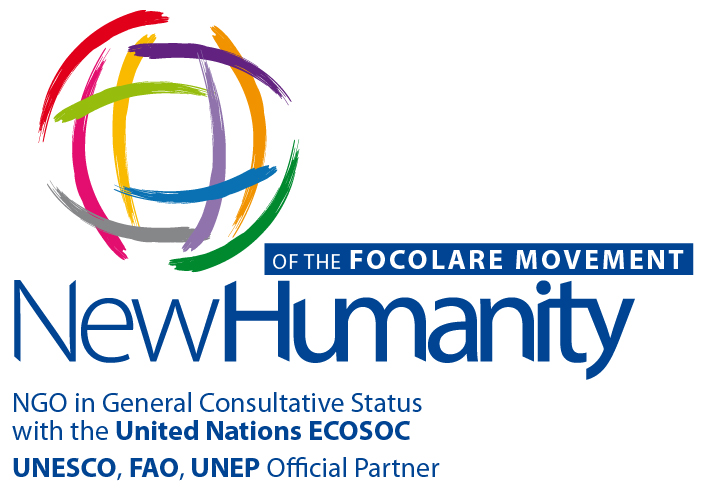Revisiting the atomic horrors of Hiroshima and Nagasaki
AVOIDABLE? The Museum of Science and Industry in Hiroshima, Japan, shortly after the dropping of the first atomic bomb, on August 6, 1945.
A newsboy shouting “Extra! Extra”came around flashing the headline “New Bomb Destroys Hiroshima.”It was August 6, 1945. We, a group of young Marines in the Navy Language School on the campus of Oklahoma A&M, were taking a short morning break from our intensive Japanese training to become “combat interpreters.”Going back to class with our Japanese-American teachers, we knew that some of them had relatives living in the Hiroshima area, but we could not ask them. A few days later, a letter came from a Jesuit I knew from university, “I told the students at the morning Mass, ‘With this bomb, America lost the war.’”
The next year I entered the Jesuits, and later was missioned to Japan. Over the past 70 years I have tried to learn as much as I could about how the war with Japan had begun and especially how it ended—when and why the United States lost the moral high ground by engaging in indiscriminate mass bombing of civilians, culminating in the dropping of atomic bombs on Hiroshima and Nagasaki.
Last year, U.S. Ambassador Caroline Kennedy (the daughter of John F. Kennedy) visited Nagasaki. On that occasion, an association of citizen groups for the abolition of nuclear weapons published in The Japan Times (Feb. 6, 2014) an open letter to President Obama:
We urge you …. to acknowledge that the atomic bombing of Hiroshima and Nagasaki in August 1945 was a crime against humanity involving indiscriminate mass killing of civilians. Accordingly, we urge you to offer an official apology to the victims of these war atrocities. We are convinced that an American apology is vital to achieve the abolishment of nuclear weapons. We also sincerely believe that doing so will increase pressure on the Japanese government to acknowledge its own war crimes of the 1940s.
The letter goes on to enumerate in detail many of the Japanese war crimes, and assert that Japanese leaders, beginning with the Emperor, diverted attention from their own war crimes by assuming the role of victim of the atomic bombing. (For more on the question of a U.S. apology, see the postscript below.)
Night Raids
In early 1945, once the Japanese had been driven out of the Pacific islands of Saipan, Tinian and Guam, the Air Force mounted a bombing campaign against the Japanese home islands. Soon, however, the strategy shifted from high-level bombing to mass low-level night raids dropping twirling metal racks that threw out burning blobs of napalm. The first large-scale raid on the windy night of March 9, 1945, burnt up a large densely populated area of central Tokyo. An estimated 86,000 people were incinerated. That was the kick-off of a campaign that, by August of 1945, had already gutted over 60 city centers. Warning leaflets were now being dropped off a few days ahead of the attacks so that people could try to escape the target cities.
For the atomic bombs, a “Target Committee”under General Leslie Groves, head of the Manhattan Project, discussed how to use the bombs for the maximum shock effect. This group morphed into the “Interim Committee”of government, military and scientific members advising President Harry Truman on the use of the atomic bomb. They recommended dropping two bombs. The first was to be on Hiroshima, a city selected, not for its military importance, but because it was a broad flat area. In the city there was an army divisional headquarters, but no large war production factories within the target area—only a broad expanse of homes, schools, hospitals, shopping and city administration areas. The parachuted bomb was ignited 1,500 feet above the city—a height carefully calculated for maximum destructive effect. The Air Force had to be explicitly notified to “spare”Hiroshima from its fire-bombing campaign.
What could have morally justified killing 140,000 people, most of whom were civilians? The historical record shows that the decision to use the atomic bombs was effectively made in early June when President Truman approvingly received the recommendations of the Interim Committee from Secretary of War Henry L. Stimson. The official written military order, effectively pulling the trigger, was sent out on July 25, the day before, not after, the Allies issued the Potsdam Proclamation, which set terms of surrender for Japan. After the war, President Truman asserted that he decided to drop the atomic bomb after Japan failed to respond to the terms laid out in the proclamation.
President Truman, together with Secretary Stimson, in the years right after the war, was the source of the “myth”that killing 140,000 people in Hiroshima and 70,000 more in Nagasaki saved “a million casualties on both sides”if it should have come to a mass invasion and a desperate fight to the finish on the home islands of Japan. Historians and military experts have repeatedly disputed these numbers, making an estimate of a maximum of 46,000 deaths in the event of a full invasion. Such estimates as well as military planning, of course, had to assume the worst, namely that no acceptable terms of surrender would be offered, only “unconditional surrender.”
Moreover, we know now that among the top military officers at the time, most foresaw that the Japanese would likely have to capitulate within a few months without need for an invasion. Admiral William D. Leahy, chairman of the Joint Chiefs of Staff, wrote in 1950: “It is my opinion that the use of this barbarous weapon at Hiroshima and Nagasaki was of no material assistance in our war against Japan. The Japanese were already defeated and ready to surrender…”The Japanese Navy had been destroyed; the home islands were already blockaded by submarines and aircraft carriers. Shipping for essential oil imports, steel, and even for food had been cut off. Oil refineries and storage had been systematically bombed by B-29’s from Guam. Even if the horrendous supposition of President Truman were true, was it morally permissible to sacrifice 210,000 hostages with the A-Bomb in order to force Japan to surrender?
Many officers of the Japanese Army, especially those of middle-rank, were fight-to-the finish fanatics. But there were reasonable men among Japan’s military and political leaders. In summer of 1945, the Japanese government, then not at war with Russia, was trying through their ambassador and the Emperor’s special envoy in Moscow to persuade the Soviets to arrange negotiations for ending the war. Stalin and Molotov, however, duplicitously stalled the talks while rapidly moving their armies across Siberia to attack Japan. The U.S. government knew the intentions of the Soviets, for Stalin had assured Roosevelt already at Yalta (Feb. 1945) that the Soviets would attack Japan three months after the defeat of Germany (May 1945). The U.S. government, having broken the Japanese diplomatic code, was listening in on what they knew were feckless Japanese diplomatic efforts in Moscow. Is it naïve to ask why the U.S. government in the early summer of 1945 did not try to meet the Japanese in their efforts to negotiate a surrender? There were neutral countries such as Switzerland, Sweden or the Vatican that could have acted as go-between.
Proposals to End the War
By July 1945, proposals had been developed within the U.S. government to make it easier for the Japanese leaders to end the war. These proposals suggested dropping the blunt demand for “unconditional surrender”and offer more detailed conditions, namely that the armed forces surrender unconditionally and that all war potential be destroyed, while a democratic national polity with the Emperor as head of state could be retained. Such a proposal could, it was hoped, be a basis for negotiating an earlier surrender. But President Truman did not act on these recommendations. The Allied leaders Potsdam Proclamation (July 26) broadcast as a kind of ultimatum, omitted the proposed assurance that the Japanese would be “free to choose their own form of government.”With this omission the hardliners could see the Proclamation to be little different from “unconditional surrender.”The Japanese government delayed its response, still striving in vain—and open to U.S. intelligence—to negotiate for better conditions through the Soviets.
Would a virtual history in which the Japanese would have earlier been shown assurances that the imperial system could be maintained have led to an earlier end of the war? We don’t know, but it would have been a more humane attempt. If negotiation could have ended the war sooner, there would have been no temptation to drop the atomic bomb; the war could have ended before the Soviets could declare war and invade Japanese occupied Manchuria and Korea. Today, there might be only one Korea.
Whether one agrees or not with this projection of virtual history, the judgment remains that the U.S. leaders did not attempt more effective diplomatic efforts to bring the war to an earlier and more humane end, and that the bombing of Japan, culminating in the use of atomic bombs, was the use of immorally excessive force—and on predominantly civilian populations. Do we dare call it a war crime?
Postscript: Is an Apology Called For?
Immediately after the dropping of the two atomic bombs, and before the actual surrender, the Japanese Foreign Minister sent a telling protest through the Swiss government:
It is the fundamental principle of international law in wartime that belligerents do not posses unlimited rights regarding the choice of the means of harming the enemy, and ….must not employ arms, projectiles or material calculated to cause unnecessary suffering. (Hague Conventions). The indiscriminateness and cruelty of the bomb the U.S. used this time far exceed those of poisonous gases and similar weapons, the use of which is prohibited because of these very qualities….The use of such a weapon is a new crime against human culture.
This was the first and only protest letter the Japanese government ever issued on the atomic bombings.
Less than a week later, on August 15, 1945 Emperor Hirohito broadcast his Imperial Rescript on the Termination of the War. He gave as reason for accepting the Allies’conditions:
The enemy has begun to employ a new and cruel bomb with incalculable power to damage and destroy many innocent lives. If we continue to fight, it would lead not only to the ultimate collapse and obliteration of the Japanese nation, but it would also lead to the total extinction of human civilization.
Japan, then, becomes the victim to save “human civilization.”In the Rescript, the Emperor, in the same vein, expressed concern for “our allied nations of East Asia, who have consistently cooperated with the Empire toward the emancipation of East Asia.”At the end of the war, most people of East Asia would have preferred not to be “emancipated”in that way.
Later, in 1955, five victims of the Hiroshima atomic bomb sued the Japanese government for damages. The Japanese government then reversed its position on the criminality of the bomb:
The use of the atomic bomb hastened Japan’s surrender and consequently prevented belligerents on both sides from being injured or killed…Examined objectively no one can conclude whether or not the atomic bombings…violated international law. Moreover, given that an international agreement to ban the use of nuclear weapons is yet to be formulated, we think that it is not possible to hastily define it illegal…From the viewpoint of international law, war is fundamentally a situation in which a country is allowed to exercise all means deemed necessary to cause the enemy to surrender.
Given this stance of the Japanese government, the writers of the letter to President Obama believe that a straightforward apology and recognition that the dropping of the atomic bombs were a war crime, would pressure the Japanese government to acknowledge its own war crimes. But now 70 years later, such an apology from the United States is unthinkable unless the people of the United States can be emancipated from the myth that the people of the two cities were vicariously sacrificed to the gods of war to avoid an even greater holocaust.
Robert Deiters, S.J., first arrived in Japanjust as General Douglas MacArthur’s occupation of the country was ending in 1952. He lives and works at Sophia University in Tokyo.



